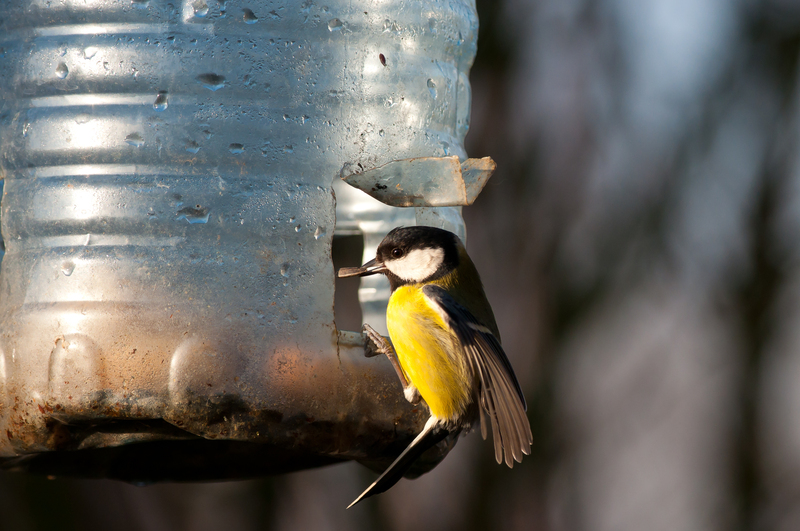Maximizing Recycling in Cardboard and Packaging Disposal
Cardboard and packaging materials are an integral part of modern commerce and daily life. As e-commerce soars and consumer habits evolve, effective disposal and recycling methods for these items have surged in importance. Maximizing recycling in cardboard and packaging disposal not only preserves resources but dramatically reduces environmental harm. This comprehensive guide delves deep into efficient recycling practices, innovative solutions, and actionable tips for consumers and businesses alike to achieve optimal sustainability.

Understanding the Importance of Cardboard and Packaging Recycling
Cardboard recycling plays a crucial role in sustainable waste management. According to the Environmental Protection Agency (EPA), paper and cardboard account for around 25% of landfill waste. These materials, when left unrecycled, contribute to methane emissions and take years to decompose. Increasing recycling rates can:
- Conserve natural resources such as trees and water
- Reduce energy consumption in manufacturing new cardboard
- Lower greenhouse gas emissions
- Decrease landfill volume and associated costs
- Promote a circular economy for packaging materials
By maximizing recycling in cardboard and packaging disposal, both individuals and companies significantly impact the planet's health.
Packaging Waste: The Scale of the Challenge
Global consumption of packaging has skyrocketed. Each year, millions of tons of cardboard boxes, corrugated fiberboard, cartons, and packaging film are generated, especially with the explosion of online shopping and food delivery services. Unfortunately, not all this waste is managed responsibly. A key challenge is maximizing the recycling of packaging waste in diverse, often inefficient waste streams.
Types of Cardboard and Packaging for Recycling
To optimize recycling in packaging disposal, it's essential to recognize the types of recyclable materials:
- Corrugated Cardboard - Used in shipping boxes, this type is highly recyclable due to its sturdy, layered construction.
- Paperboard or Carton Boxes - Used for products like cereals or shoe boxes, made from a single layer of paperboard.
- Kraft Paper - Often found as brown packaging paper, easily recyclable and compostable.
- Cartons (Tetra Pak) - Beverage and food cartons with layers of paper, plastic, and sometimes aluminum; recyclable in specialized facilities.
- Other Packaging Materials - Packaging film, plastic wraps, polystyrene (not always recyclable), and bubble wrap require different disposal strategies.
Separating these materials is the first step toward maximizing recycling efficiency in packaging disposal.
Effective Strategies for Maximizing Cardboard and Packaging Recycling
1. Source Separation and Sorting
For both households and businesses, source separation is critical. Mixing cardboard with food waste or non-recyclables dramatically impacts the recyclability of materials. Implement the following:
- Designate separate bins for cardboard, mixed paper, plastics, and landfill waste.
- Educate employees or family members on what constitutes recyclable packaging.
- Empty all packaging of food residues and remove tape or labels when possible.
2. Flatten and Prepare Cardboard Properly
Cardboard takes up a lot of space if left intact. Flattening boxes optimizes storage and transportation, reduces emissions, and allows recycling centers to process higher volumes efficiently. Remove any plastic inserts or non-paper packaging elements beforehand.
3. Bulk Collection and Scheduling
Businesses, in particular, benefit from setting up regular, bulk cardboard collection. Collaborate with local recycling firms for scheduled pickups or deploy on-site cardboard balers to compact waste for easier handling.
4. Use of the Latest Recycling Technologies
Modern recycling plants leverage advanced technologies like automated sorting, optical scanners, and AI to separate cardboard from packaging waste. Supporting these facilities by providing clean, sorted materials helps streamline the recycling process.
5. Buy Recycled and Recyclable Packaging
Closing the recycling loop means choosing products packaged in recyclable or already recycled materials, such as post-consumer recycled cardboard or bio-based packaging films. This promotes ongoing demand for recycled goods and sustainable packaging solutions.
Innovative Packaging Disposal and Recycling Programs
Government, community, and private-sector initiatives are pivotal for maximizing recycling of packaging materials. Consider these successful models:
- Deposit-Return Systems - Consumers pay a deposit returned when they bring packaging back for recycling. Popular in beverage cartons and bottles.
- Extended Producer Responsibility (EPR) - Regulations requiring manufacturers to manage packaging waste after its use, investing in collection and reprocessing.
- Community Cardboard Drives - Local campaigns to collect large volumes of cardboard after holidays, moving periods, or retail sales events.
- Zero Waste Retail Initiatives - Stores and brands minimizing packaging or switching to reusable/recyclable options.
- Municipal Curbside Recycling - City-run programs that collect sorted recyclables directly from homes and businesses.
Best Practices for Households
- Regularly empty and flatten packaging before placing it in recycling bins.
- Check local recycling guidelines. Not all municipalities accept the same types of packaging. Visit your city's website for precise instructions.
- Upcycle creatively. Cardboard can be reused for crafts, storage, gardening (weed barriers, compost), or pet projects (cat playhouses, anyone?).
- Keep packaging clean. Food-soiled or wet cardboard is often rejected by recycling facilities.
Best Practices for Businesses
- Establish clear recycling protocols in warehouses, offices, and retail spaces.
- Invest in on-site baling equipment for large volumes of cardboard to cut transport costs and emissions.
- Train staff regularly on proper disposal and sorting techniques.
- Partner with certified recyclers or industry take-back programs for difficult-to-recycle packaging.
Common Challenges and How to Overcome Them
Contamination
The biggest obstacle to maximizing packaging recycling is contamination, mainly from food residues, oil, or mixed materials. Always separate food from packaging and ensure recyclable items are dry and clean before disposal.
Lack of Awareness
Many consumers are unaware of their local recycling options or toss recyclable packaging in the trash out of habit. Education and clear signage make a notable difference--both in homes and workplaces.
Access to Recycling Facilities
Not all regions have easy access to comprehensive recycling services. Community recycling points, drop-off centers, or partnerships with private waste firms can fill the gap in such cases.
Mixed Packaging Materials
Items combining cardboard with plastic, foam, or metal (like mailers or insulated boxes) complicate recycling. Where possible, separate these components before disposal or seek out specialized recycling programs.
Recycling Myths
- "All types of cardboard are recyclable." - Not true. Waxed, heavily coated, or contaminated boxes may not be accepted.
- "Throwing non-cardboard packaging with cardboard is fine." - This can result in entire batches being landfilled! Always sort diligently.
- "Small pieces don't matter." - Tiny scraps can jam machinery at recycling plants. Keep pieces as large as possible.
The End Market: What Happens After Recycling?
After collection and sorting, cardboard and packaging materials undergo a pulping process. Here, ink and adhesives are removed, and fibers are reconstituted into new sheets of cardboard, paper products, or insulation. Each round of recycling slightly shortens fiber length--meaning fiber can only be recycled several times before it must be retired to compost or waste energy recovery.
- New Cardboard Boxes and Containers: Most recycled cardboard re-enters the packaging supply chain.
- Paper Products: Recycled fibers make tissues, paperboard, and notebooks.
- Construction Materials: Insulation, wallboard, and soundproofing are sometimes made from recycled packaging fibers.
Emerging Trends in Sustainable Packaging and Recycling
Biodegradable and Compostable Packaging
As demand for eco-friendly packaging options rises, manufacturers are developing plant-based, biodegradable films and boxes. These reduce landfill impact, especially where recycling infrastructure is weak.
Smart Packaging and Trackability
Technology is also enabling smart packaging--with QR codes and sensors that help inform consumers of recycling options or track packaging's environmental footprint throughout its life cycle.
Reusable Packaging and the Circular Economy
More companies are piloting reusable packaging systems, like loop mailers or returnable delivery boxes for groceries and e-commerce, which make significant inroads into reducing single-use packaging waste.

Frequently Asked Questions: Maximizing Recycling in Cardboard and Packaging Disposal
Q1: Is colored or printed cardboard recyclable?
Yes, most colored or printed cardboard can be recycled. Inks are typically removed during the pulping process. However, wax-coated or heavily laminated boxes should be checked for local acceptability.
Q2: What about packaging with food residue?
Food-soiled cardboard (like pizza boxes) can sometimes be recycled if the contaminated portion is removed. If heavily soiled, composting is a better alternative.
Q3: Are plastic bubble mailers recyclable?
Bubble mailers blending paper and plastic are typically not accepted in standard curbside programs. Some retailers offer drop-off programs for plastic film recycling.
Q4: Can packaging tape and labels stay on?
Small amounts of tape or labels are generally removed during processing, but it is best practice to remove as much as possible for cleaner recycling.
Conclusion: Taking Action for a Greener Future
By maximizing recycling of cardboard and packaging waste, each of us contributes to a healthier planet and a robust, circular economy, minimizing our reliance on virgin resources. Commitment from consumers, businesses, and policymakers alike ensures that the mountains of packaging generated daily are handled responsibly, efficiently, and sustainably.
Start today: flatten your boxes, sort your recyclables, stay informed, and advocate for better systems in your community. Together, these efforts make a measurable difference in environmental impact and quality of life for generations to come.